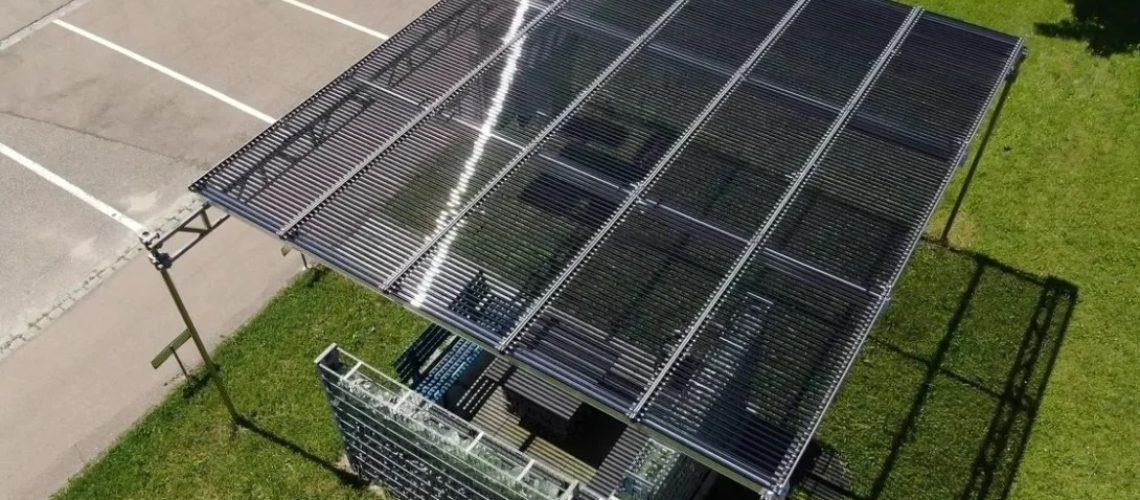As solar power has been developed and popularized across the globe over the last several decades, the industry has given way to more recent innovation that allows for higher efficiency in irregular places: thin-film solar cells. These lightweight, flexible cells are capable of attachment to surfaces of nearly any shape or design, thanks to their flexibility, while requiring minimal structural supports, due to their light weight. With this technology, solar power is able to be harnessed in a variety of applications and places where previously thought impossible, due to the rigid structure and heavy nature of traditional solar panels.
And now, thin-film solar modules are ready to take on their next challenge: agrivoltaics.
As the impacts of climate change worsen each year, domestic farmers have begun to struggle to keep their crops healthy, as the sun beats down on them with punishingly-high temperatures. Thankfully, a new use of solar technology, known as agrivoltaics (APV), have come to help.
Farmers need elevated coverage to provide partial shade for their struggling crops and solar modules need ample space to soak in the sunlight to generate power. APV combines these two needs, by placing arrays of solar modules above areas of crop growth, to provide partial shade, which reduces sunburn on the land, reduces water evaporation, and insulates the crops from extreme cold and extreme heat, all while giving farmers the primary benefit of solar power utilization: a second revenue stream through power generation.
And now, thin-film solar PV is ready to supercharge this powerful relationship.
Current challenges facing agrivoltaics
If you were to set up your agrivoltaic system with traditional, rigid solar panels, it’s possible you will run into some logistical issues. Traditional panels are quite heavy, requiring substantial support structures, and are so large that they provide more shade than necessary for most crops, and can stifle their health and growth. The goal of a balanced APV system is to provide just the right amount of shade that keeps the land from dehydration while also allowing the proper amount of sunlight to shine through and help the crops grow. Unfortunately, the rigid nature of traditional solar panels limits the ability to strike this delicate balance.
Most current APV installations that utilize rigid panels will typically consist of a row of solar panels next to a row of crops, taking about half of the land out of production, and make crop care and harvesting quite difficult. Heavy machinery employed in standard maintenance and harvesting processes often must be replaced by expensive manual labor to avoid damage to the solar system.
Lastly, the electrical conduit for traditional solar modules is installed underground; this disables flood irrigation and therefore can limit the variety of crops that are able to be grown in symbiosis with a traditional solar array. If only certain crops can work within the module, then it may end up not being a good fit for an otherwise interested farmer.
Key benefits of thin-film for agrivoltaics
In contrast with traditional panels, thin-film solar cells are much more adaptable to these agricultural situations, thanks to their flexible, lightweight design. Thin-film agrivoltaics overcome the challenges of their rigid, heavy counterparts by consisting of a series of solar crossbars covered in solar that are elevated high above the protected crops, which allows for:
- The full area to be used for growing crops
- The full area to receive partial sun and shade during daylight hours, rather than the full sun or full shade situation offered by traditional solar panels, which stifles crop growth
- The crops to be serviced and harvested using whatever machinery that is typically used, thanks to thin-film solar’s lightweight design allowing for the technology to be implemented at such a high elevation
Agrivoltaics, using thin-film solar technology, allow for the proper distribution of shade and sunlight onto the ground beneath it.
The use of thin-film solar cells also allows for greater energy savings, a healthier crop yield, and increased water savings.
Perhaps best of all, is the ability for thin-film modules to continue functioning after being struck, impaled or damaged. Climate change continues to bring about dangerous, unpredictable weather phenomena, where high winds carrying various items and debris is common. When a traditional solar cell suffers an impact, its glass coating is often shattered, creating a costly mess, the need for swift, expensive repair, and the total lack of energy production until it is properly fixed. But thin-film solar cells don’t have these same drawbacks; if a cell is punctured or damaged by outside forces, the rest of the cell will continue to function just fine, leaving only the small, damaged area in need of repair, rather than taking the whole array out of commission.
The future of thin-film for agrivoltaics
As more and more domestic farmers turn to agrivoltaics as a viable solution to increase revenues per acre, reduce on site energy costs and to bolster crop yields, we will start to see a greater embrace of thin-film solar to get the job done.
While there are plenty of applications and situations where large, traditional, rectangular solar panels are the optimal choice for solar power generation, agrivoltaics is an area that requires the flexible nature of thin-film solar technology to deftly handle the delicate relationship between crops and their need for shade and sunlight. Soon, farmers across the nation will begin to see not only the lucrative energy-saving benefits of thin-film agrivoltaics, but also the crop health benefits of it as well.
Paul Warley is CEO of Ascent Solar Technologies, Inc., maker of flexible thin-film solar panels. Prior to Ascent, Warley was president of Warley & Company LLC, a strategic advisory firm that provided executive management services, capital advisory, and M&A to middle-market companies in the service, construction, technology, oil & gas, clean energy, food, retail and green-building sectors.



